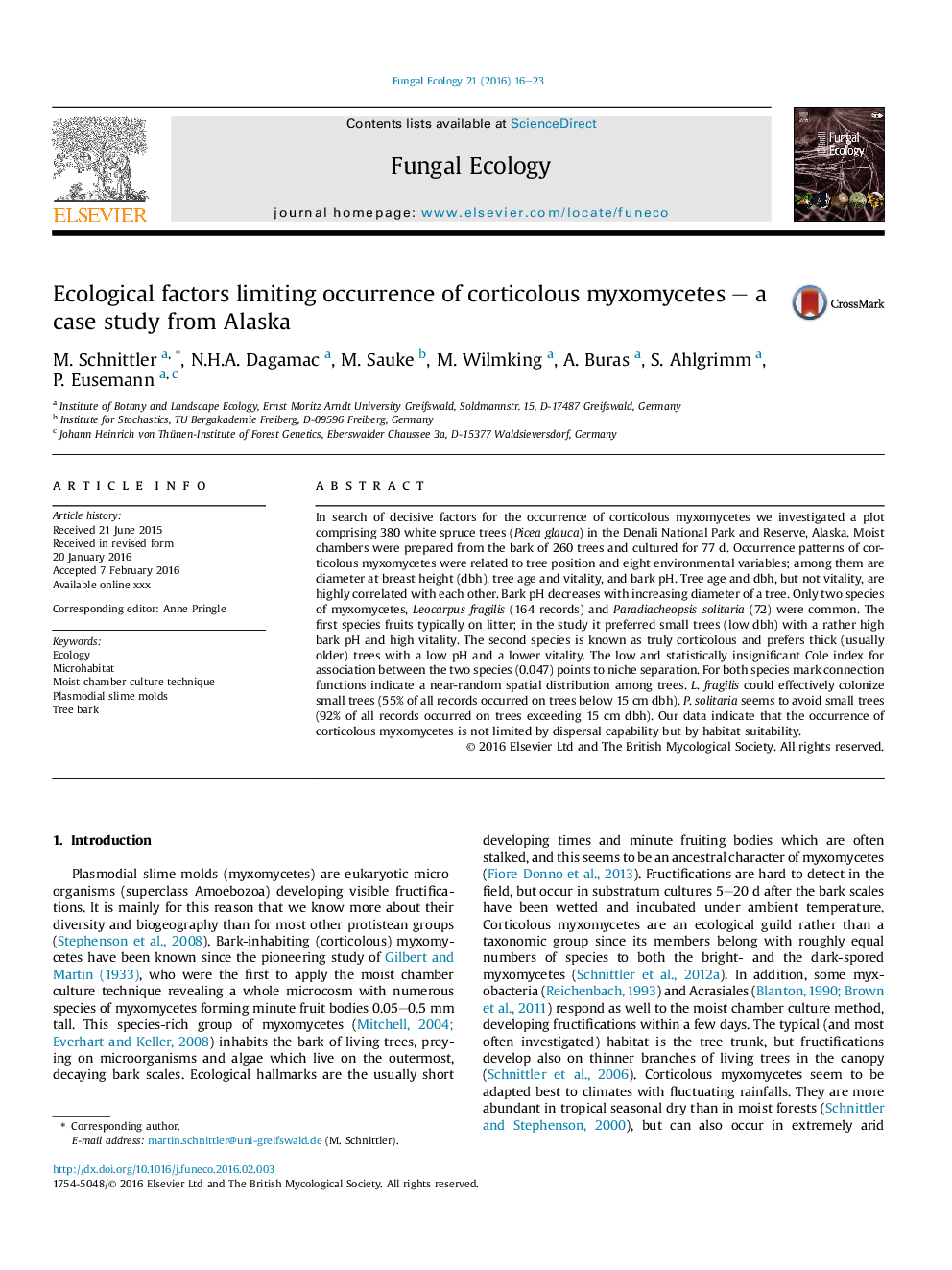| Article ID | Journal | Published Year | Pages | File Type |
|---|---|---|---|---|
| 8384405 | Fungal Ecology | 2016 | 8 Pages |
Abstract
In search of decisive factors for the occurrence of corticolous myxomycetes we investigated a plot comprising 380 white spruce trees (Picea glauca) in the Denali National Park and Reserve, Alaska. Moist chambers were prepared from the bark of 260 trees and cultured for 77Â d. Occurrence patterns of corticolous myxomycetes were related to tree position and eight environmental variables; among them are diameter at breast height (dbh), tree age and vitality, and bark pH. Tree age and dbh, but not vitality, are highly correlated with each other. Bark pH decreases with increasing diameter of a tree. Only two species of myxomycetes, Leocarpus fragilis (164 records) and Paradiacheopsis solitaria (72) were common. The first species fruits typically on litter; in the study it preferred small trees (low dbh) with a rather high bark pH and high vitality. The second species is known as truly corticolous and prefers thick (usually older) trees with a low pH and a lower vitality. The low and statistically insignificant Cole index for association between the two species (0.047) points to niche separation. For both species mark connection functions indicate a near-random spatial distribution among trees. L. fragilis could effectively colonize small trees (55% of all records occurred on trees below 15Â cm dbh). P. solitaria seems to avoid small trees (92% of all records occurred on trees exceeding 15Â cm dbh). Our data indicate that the occurrence of corticolous myxomycetes is not limited by dispersal capability but by habitat suitability.
Keywords
Related Topics
Life Sciences
Agricultural and Biological Sciences
Ecology, Evolution, Behavior and Systematics
Authors
M. Schnittler, N.H.A. Dagamac, M. Sauke, M. Wilmking, A. Buras, S. Ahlgrimm, P. Eusemann,
